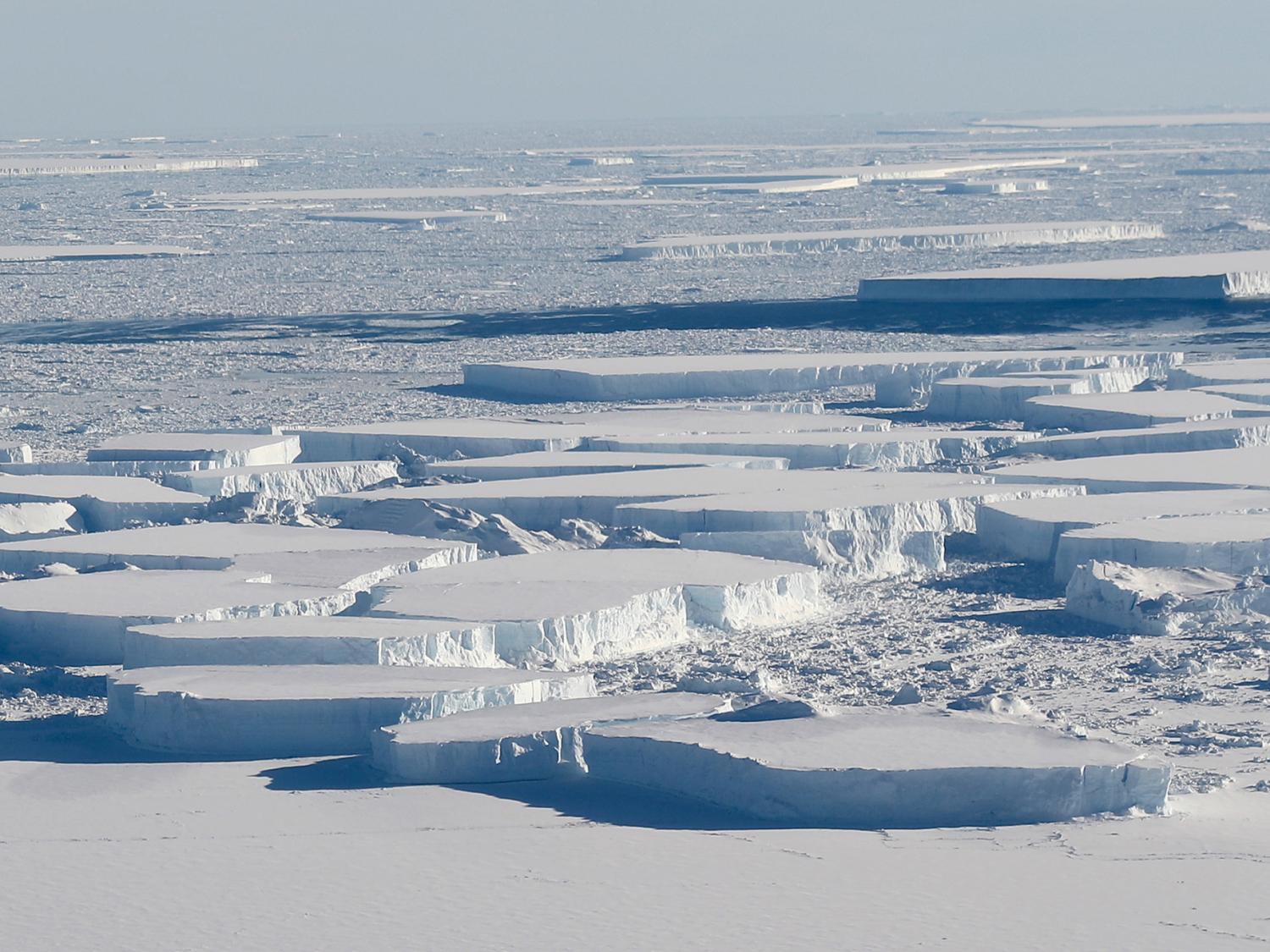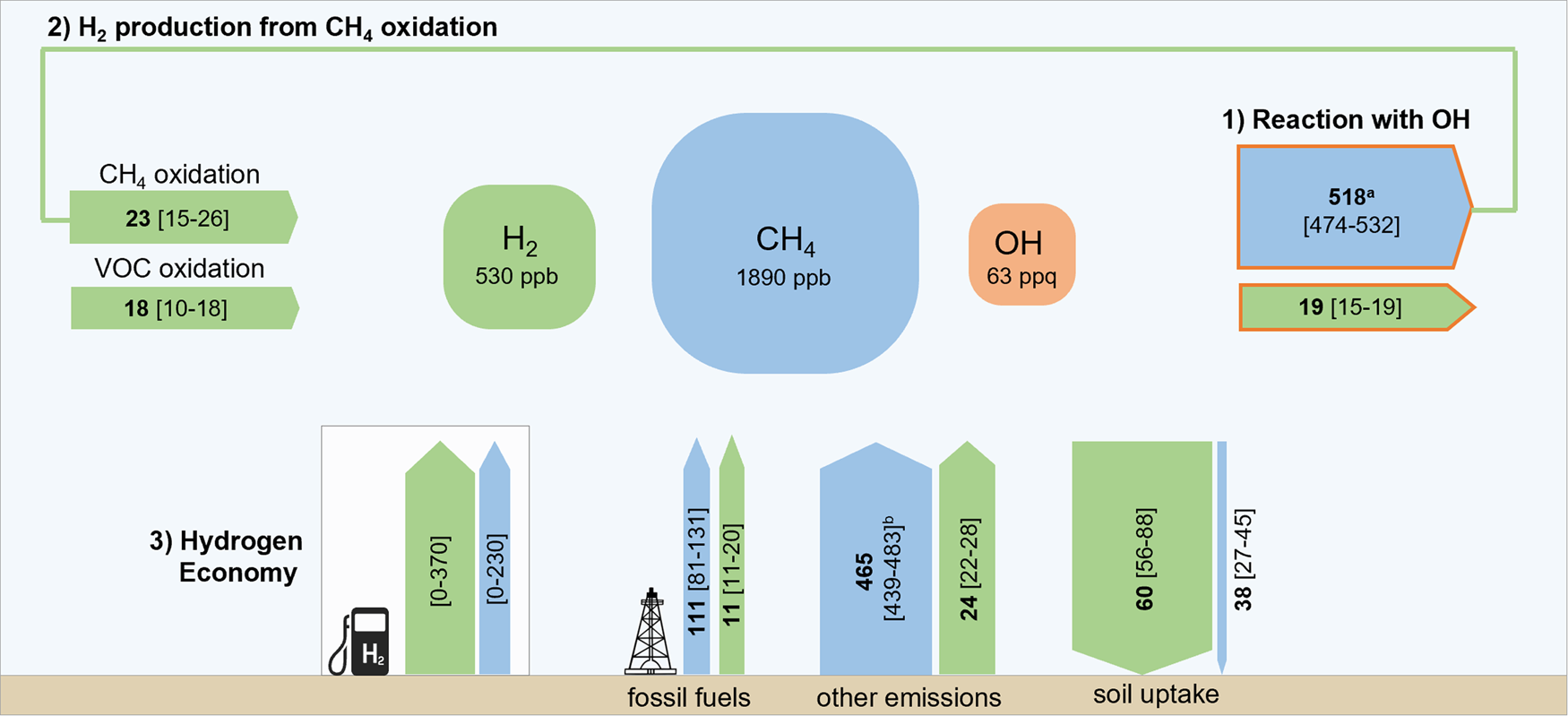将来の南極の棚氷崩壊を見守るための指標になり得ると科学者らが指摘 Indicators could be used to watch for future Antarctic ice shelf collapse, according to scientists
2023-03-13 ペンシルベニア州立大学(PennState)
 Large tabular icebergs located between Antarctica’s Larsen C ice shelf and the A-68 ice island, which calved off of the Larsen C, as seen on a NASA Operation IceBridge mission on Oct. 16, 2018. Credit: NASA. All Rights Reserved.
Large tabular icebergs located between Antarctica’s Larsen C ice shelf and the A-68 ice island, which calved off of the Larsen C, as seen on a NASA Operation IceBridge mission on Oct. 16, 2018. Credit: NASA. All Rights Reserved.
氷棚は陸地に接続された浮遊する氷で、海洋温暖化によって表面と水中から溶けて弱くなることが知られているが、崩壊までの正確なプロセスはよく分かっていない。この研究は、将来の南極の氷棚の後退に注意するための警告サインを明らかにする可能性があると述べている。
<関連情報>
- https://www.psu.edu/news/research/story/new-study-finds-early-warning-signs-prior-2002-antarctic-ice-shelf-collapse/
- https://www.sciencedirect.com/science/article/abs/pii/S0012821X23000900?dgcid=author
北ラーセン棚氷の崩壊前後の数十年ダイナミクス Multidecadal pre- and post-collapse dynamics of the northern Larsen Ice Shelf
Shujie Wang, Hongxing Liu, Richard B. Alley, Kenneth Jezek, Patrick Alexander, Karen E. Alley, Zhengrui Huang, Lei Wang
Earth and Planetary Science Letters Available online: 13 March 2023
DOI:https://doi.org/10.1016/j.epsl.2023.118077
Abstract
Rapid retreat of Antarctic ice shelves in a warmer climate remains challenging to predict, contributing to uncertainties in projections of sea level rise. The collapse of the Larsen B Ice Shelf on the Antarctic Peninsula in 2002 was perhaps the most dramatic example of ice shelf retreat on record. Despite a general consensus that regional climate warming is associated with ice shelf collapse, knowledge of the precise details leading to and following collapse is limited. Here we examine a comprehensive set of satellite observations, modeling experiments, and climate reanalysis data to elucidate calving behavior, flow dynamics, and mechanical conditions of the northern Larsen Ice Shelf since the mid-1960s. Our analysis reveals that the Larsen B collapse in March 2002 was the last phase of a calving sequence that began in 1998, and was controlled by both atmospheric and oceanic anomalies that weakened the ice shelf structure over time. The collapse was preceded by a transition from infrequent calving of large tabular-icebergs and localized flow acceleration to frequent calving of small-icebergs and ice-shelf-wide acceleration. The intermittent pulses of the calving sequence were triggered by failure of the northern shear margin, most likely due to ocean-driven weakening by incision of sub-ice-shelf channels, and were further controlled by the location of effective buttressing sources and preexisting crevasses. The limited observational data indicate a similar process for the Larsen A ice shelf. These calving events corresponded with warm anomalies associated with a La Niña / positive Southern Annular Mode teleconnection pattern. The results suggest that warm climate anomalies control the occurrence of calving, while the extent and speed of calving are governed by ice shelf geometry and mechanical conditions, in particular, the sturdiness of the “weakest” shear margin. Sudden widespread flow acceleration and frequent small-iceberg calving may serve as quantifiable precursors for ice shelf destabilization.



